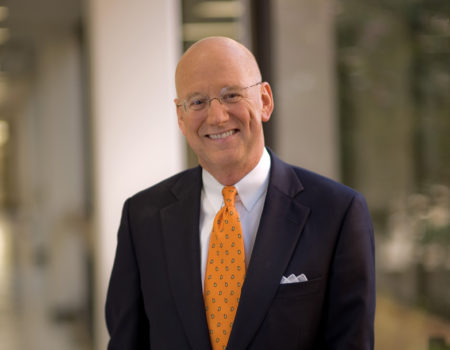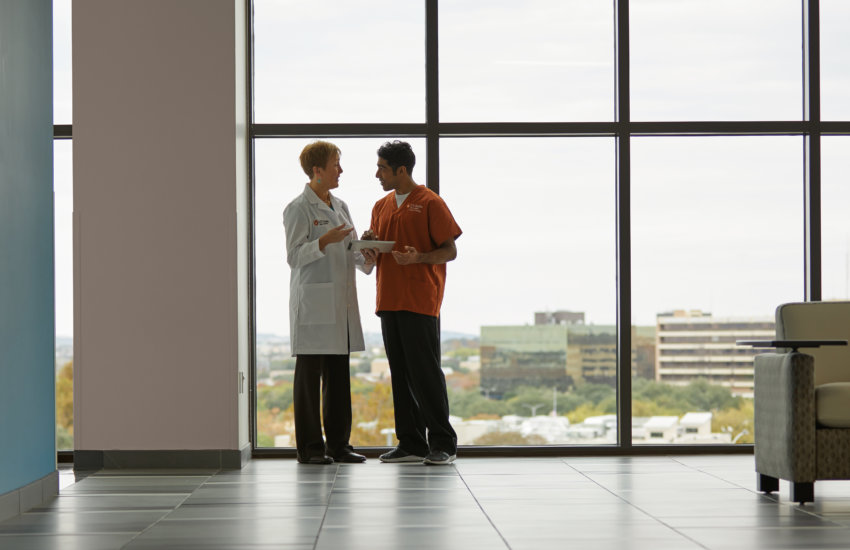
William L. Henrich, M.D., MACP, president and professor of medicine at UT Health San Antonio, recently discussed the importance and benefits of academic medical centers.
Q. What exactly is an academic medical center?
Academic medical centers, including UT Health San Antonio, play a central and vital role in the health and well-being of our nation. Like other academic centers, UT Health San Antonio trains the doctors, nurses, dentists and other health care professionals of the future. Additionally and critically, we also are a thriving scientific research enterprise that simultaneously delivers leading-edge patient care to thousands of our fellow community members.
Our missions are complementary and embedded in all we do. The unique feature of an academic medical center is that three missions — patient care, research and education — guide and shape its existence.
Q. What do such centers mean for a local economy?
The financial benefit of a center such as UT Health San Antonio to the local community is enormous. We are the hub of the bioscience economy, now surpassing $40 billion in San Antonio. We collaborate with multiple organizations in the community to make bioscience efforts successful. We have partnerships with The University of Texas at San Antonio, Southwest Research Institute and Texas Biomedical Research Institute. We share grants. We have a long-standing, robust and growing relationship with military medicine in San Antonio.
At UT Health San Antonio there are a number of commercial spinoffs each year that come from bioscience endeavors, and we now have around $240 million in sponsored programs in research. These spinoffs and sponsored programs invariably lead to more investments in support structure. So every $1 in federal support we receive is translated into about $7 in community benefits. UT Health San Antonio is an accelerator of financial growth for the city.
Taken together, we represent a substantial investment in San Antonio’s bioscience and educational future. Without UT Health San Antonio, the city and region would have a much more difficult, if not impossible, time plotting a way forward in medicine and the biosciences.
Q. What do such centers mean for health care and for patients?
Without UT Health San Antonio, there wouldn’t be a steady supply of doctors, dentists, nurses and health professions caregivers in San Antonio or the region. The shortage of providers would be devastating.
As for patient care, we have affiliation agreements with our primary partner, the Bexar County Hospital District. University Hospital is our primary teaching hospital. There we treat many of the most badly injured patients in its Level 1 Trauma Center and the most complex illnesses in every area of hospital medicine.
And in our physicians practice, we have over 100 subspecialties in medicine providing care for thousands. We now have multiple locations around the city in which to deliver that service. We’re taking primary care to where people live.
This is unique to an academic medical center. You can’t separate our teaching function from our patient care or from our scientific research. They all feed off each other and, together, benefit the individual patient, the community and society.
Q. What are some of the obstacles you face?
State-supported academic medical centers such as UT Health San Antonio face very specific challenges. Because state support has declined over the years, we now depend on our clinical practice to subsidize education and research. Without the clinical mission, we would not be able to have the robust research capabilities we have nor deliver a first-class education to our students, which we do every day.
A related challenge is offering a compelling case to society that education is the future of the country. Whoever owns the knowledge economy will own the future. It is very important for our state legislators to invest in higher education and in health-related education in particular. Without it, Texas will not be able to compete. We are grateful for the support we are receiving and have received. It is an ongoing investment that continues to pay tremendous dividends for our state. We are worth the investment.
Q. What are you excited about?
We are accomplishing so much in myriad areas, and in ways that can only be achieved by an academic medical center. We are attracting the best students and recruiting and retaining world-class faculty members. More and more we’re being recognized for the extraordinary research we’re accomplishing every day.
We have a new partner in cancer care. The UT Health San Antonio MD Anderson Cancer Center provides the absolute best in cancer research, care and treatment right here in San Antonio. We’re building a new facility for one of the world’s premiere aging research institutes, the Sam and Ann Barshop Institute for Longevity and Aging Studies. And our new Biggs Institute for Alzheimer’s and Neurodegenerative Diseases will take a truly comprehensive approach to battling these horrible diseases.
I believe these huge initiatives, such as in cancer and neurodegenerative diseases, can be accomplished only by an academic medical center precisely because we, unlike other institutions, bring to the challenge the power of all three missions — education, research and patient care.
Q. What is your ultimate goal?
Our goals are rooted in our multiple missions. We will continue to be a world-class academic health center, transforming health and health care for all. We will reduce health care costs through preventive medicine, and we will work tirelessly to eradicate the world’s deadliest diseases.
It is because we are an academic medical center that we are able to accomplish these worthy goals. And you — our community and the world at large — are why we remain steadfast in our commitment to make lives better.


